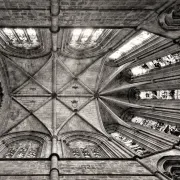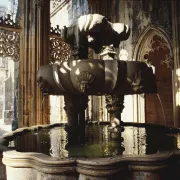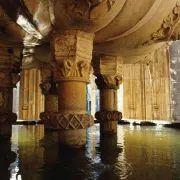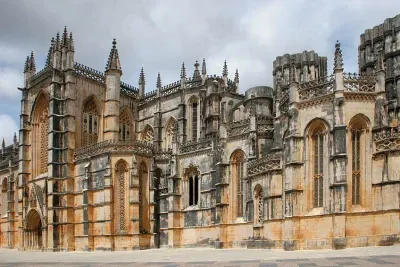
A small town amidst the hills of the Leiria area, Batalha only became a place of any significance upon the building of its magnificent monastery, now honoured with UNESCO World Heritage status. This gigantic pearl of Gothic architecture occupied Portugal's most accomplished tradesmen under Royal command for the best past of two centuries.
It was built to celebrate the Portuguese victory over the Castilians in the Battle of Aljubarrota in 1385, thus keeping a vow made by King João I to the Virgin Mary prior to the momentous conflict. The illegitimate brother of the dead, heirless king, João's right to the throne of Portugal was challenged by the then Spanish king Juan. Outnumbered and ill equipped, he feared the worst and prayed for assistance from the Virgin. Once victorious, he built and named the monastery in her honour - Mosteiro de Santa Maria da Vitória.
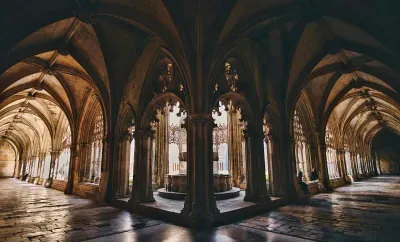
The town itself is small and fairly nondescript, most people opting to stay in nearby Fátima, Alcobaça or Nazaré on the coast and making this a well-deserved day trip. However there are places to stay and eat here, including the luxurious pousada just opposite the Monastery, and the surrounding countryside comprises the Serra d'Aire and Candeeiro, both beautiful hilly areas famous for their wine production.
The Monastery, a stunning example of filigree stone work and beautiful design, is, for the main part, Gothic in style. Ornate archways lead to magical chambers and chapels and its exterior is a veritable throng of sculptures of saints and other important characters. However, its piece-de-resistance, the Royal Cloister, displays much evidence of the beginnings of Manueline style in its nautical carvings. More exceptional examples of Manueline masonry can be found in the seven chapels which lie unfinished, interestingly because the masons in question were taken by Manuel I to Belém in Lisbon to start work on the magnificent its Mosteiro de Jerónimos.
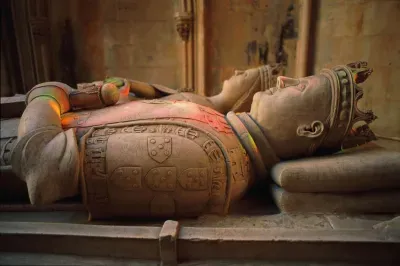
Inside, a number of elegant tombs belong to people of great importance in Portuguese history. Carved figures of King João himself and his English wife Philippa of Lancaster lie peacefully, hands held, protecting their final resting-place in the Chapel of Founders. Nearby lies the tomb of their decidedly more famous, yet never crowned, son Henry the Navigator. Part of the monastery is also set up as a museum dedicated to the memory of fallen soldiers, and here two tombs belonging to unknown Portuguese soldiers of World War One continue to link this grand memorial to a now distant conflict to present times.
Surrounding the monastery are tailored gardens containing a 20th century statue honouring General Nuno Alvares, a key player in the battle commemorated here.


